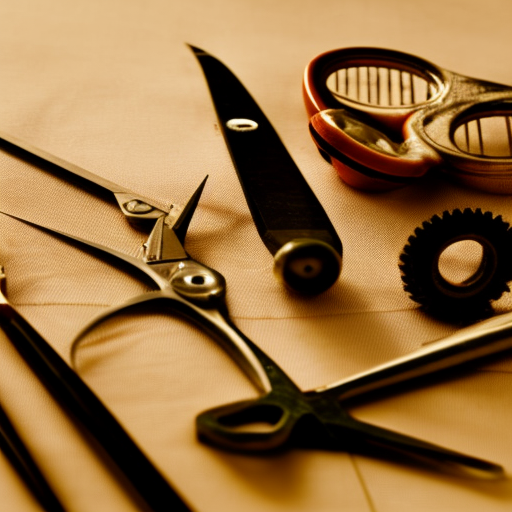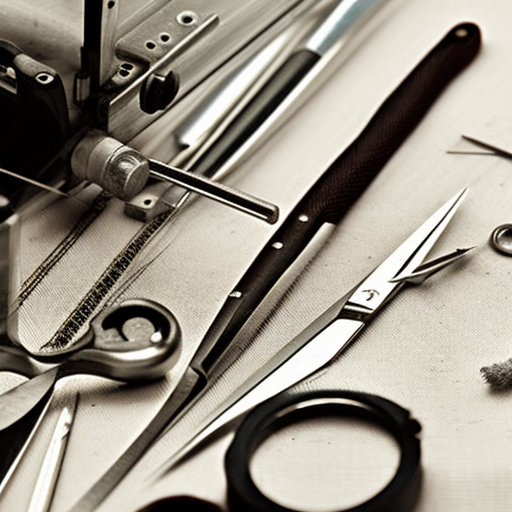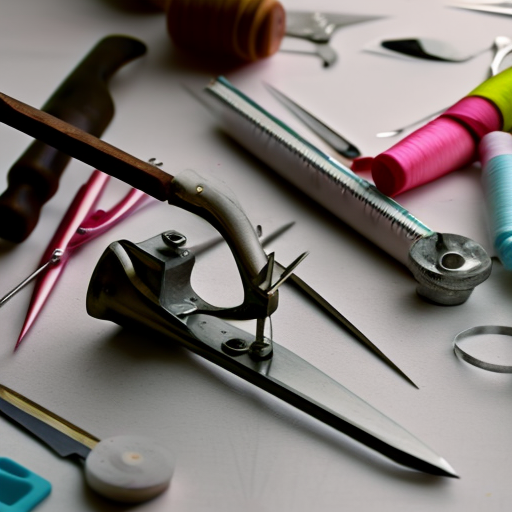The Essential Tool for Every Sewing Enthusiast: The Thimble
As every experienced seamstress knows, sewing is an art that requires precision, patience, and attention to detail. It may seem like a simple task, but crafting beautiful garments or making intricate designs on different fabrics requires the use of several essential tools. And one tool that should not be overlooked is the thimble.
A thimble may seem like a small and insignificant tool, but it plays a crucial role in the sewing process. This small, cup-shaped object, often made of metal or plastic, is usually worn on the fingertip to protect it from the sharp needles used in sewing. It is a must-have for every sewing enthusiast, from beginners to experts alike.
Now, you may be wondering, “Why do I need to wear a thimble when I have my fingers?” The answer is simple. The thimble offers more control and protection for your fingers, making your sewing experience more comfortable and efficient.
The main purpose of a thimble is to provide a barrier between your finger and the needle, protecting your fingertips from getting poked or pricked by the sharp end of the needle. When working with sharp needles and delicate fabrics, accidents can happen, causing injury and unwanted blood stains on your fabric. The thimble acts as a shield, preventing any such mishaps.
Moreover, wearing a thimble allows you to push the needle through tough or multiple layers of fabric with ease. The metal surface of the thimble offers a better grip, enabling you to exert more pressure without hurting your fingers. This is especially helpful when working with heavy-duty fabrics like denim or leather, which can be challenging to pierce through with a needle.
Aside from being a protective tool, a thimble can also aid in accuracy and speed. With its rounded and smooth surface, it helps guide the needle in and out of the fabric in a straight and consistent path. This can be particularly helpful when doing intricate stitches or working on detailed designs.
Now that we have established the importance of a thimble let’s explore the different types available in the market. The most common thimbles are the metal thimble and the plastic thimble. The metal thimble has been around for centuries and is usually made of silver, brass, or nickel. It provides a sturdy and long-lasting option, perfect for heavy-duty sewing. On the other hand, plastic thimbles are relatively new and are typically made of hard plastic material. They offer a more lightweight and flexible alternative, ideal for sewing delicate fabrics such as silk or chiffon.
Another type of thimble is the leather thimble. Unlike the metal and plastic ones, leather thimbles are worn over the finger instead of on the fingertip. They offer a snug fit and a better grip, making them a popular choice among quilters.
If you’re looking for a more specialized thimble, you can opt for the open-ended or ring thimble. As the name suggests, these thimbles do not have a closed top and allow for better maneuvering when working with longer needles.
In addition to its practical uses, thimbles can also be a beautiful and intricate accessory. Some thimbles come with intricate designs or have engraved patterns, making them a collectible item for sewing enthusiasts.
In conclusion, sewing tools are essential in achieving a neat and perfect outcome, and the thimble is undoubtedly one of the most crucial tools in a sewer’s arsenal. It offers protection, control, and accuracy, making sewing a less tedious and more enjoyable task. So the next time you sit down to sew, don’t forget to put on your trusty thimble – your fingers will thank you.





Perfect for any sewing project!
#GreatFind
Ana Smith: Really helpful when hand-sewing! Such a great tool!
This thimble is great for detailed hand-sewing projects. It’s the perfect tool to help make delicate stitches quickly and efficiently! I’ve been looking for something like this for a while and am so glad I stumbled upon it. #LuckyFind
So glad I found this, it’s exactly what I needed! #umbledUponField
Fantastic for anyone who loves sewing and quilting! #SewingToolsThimble